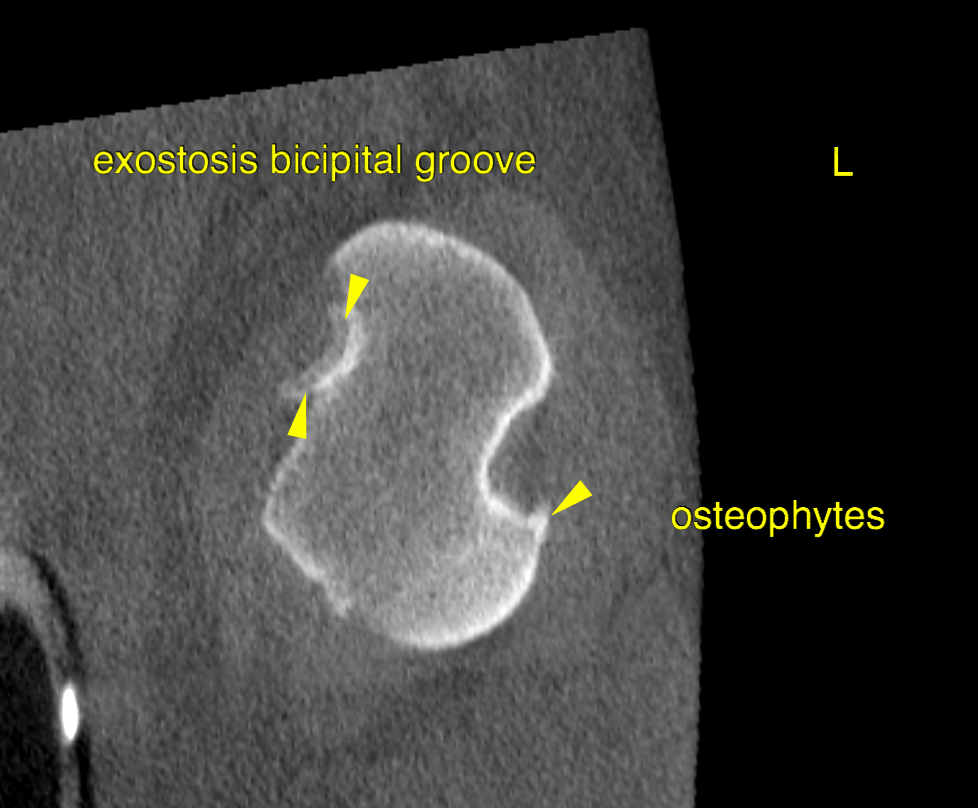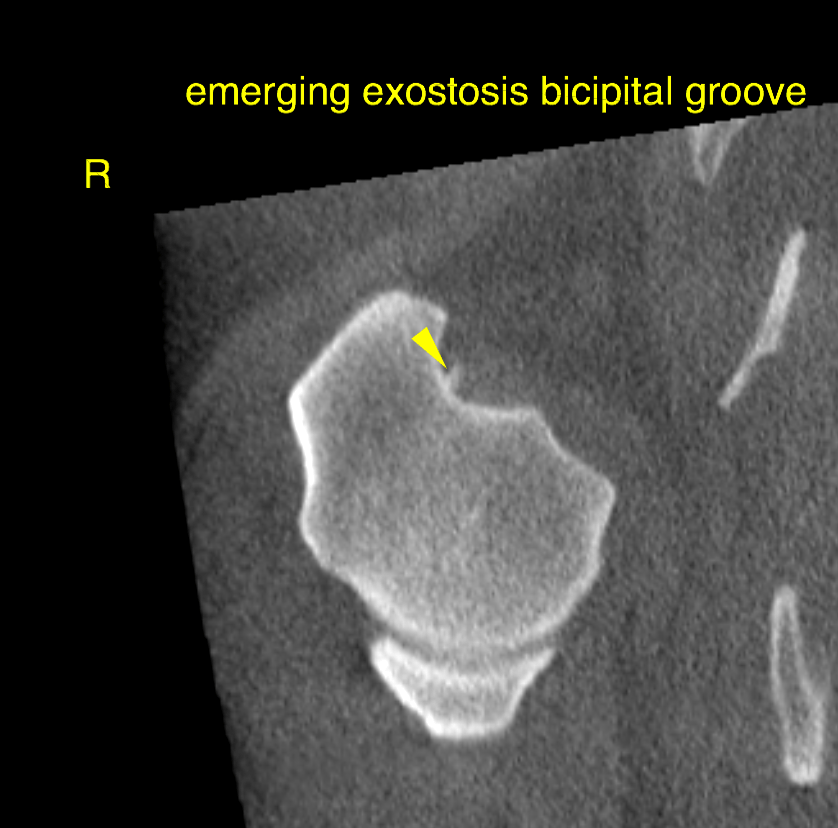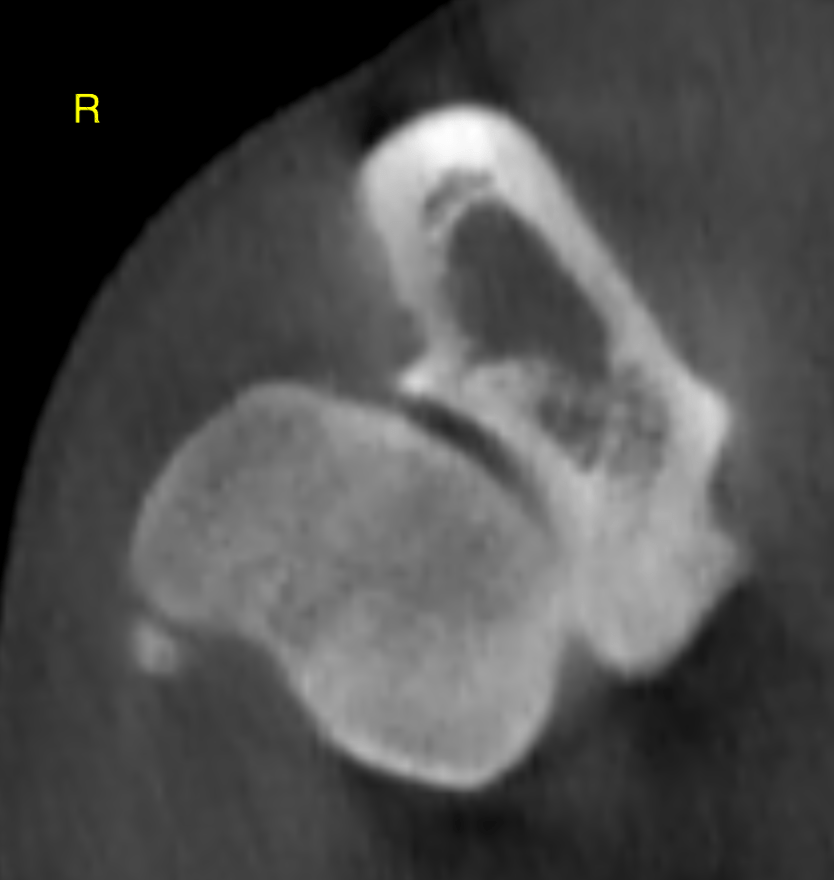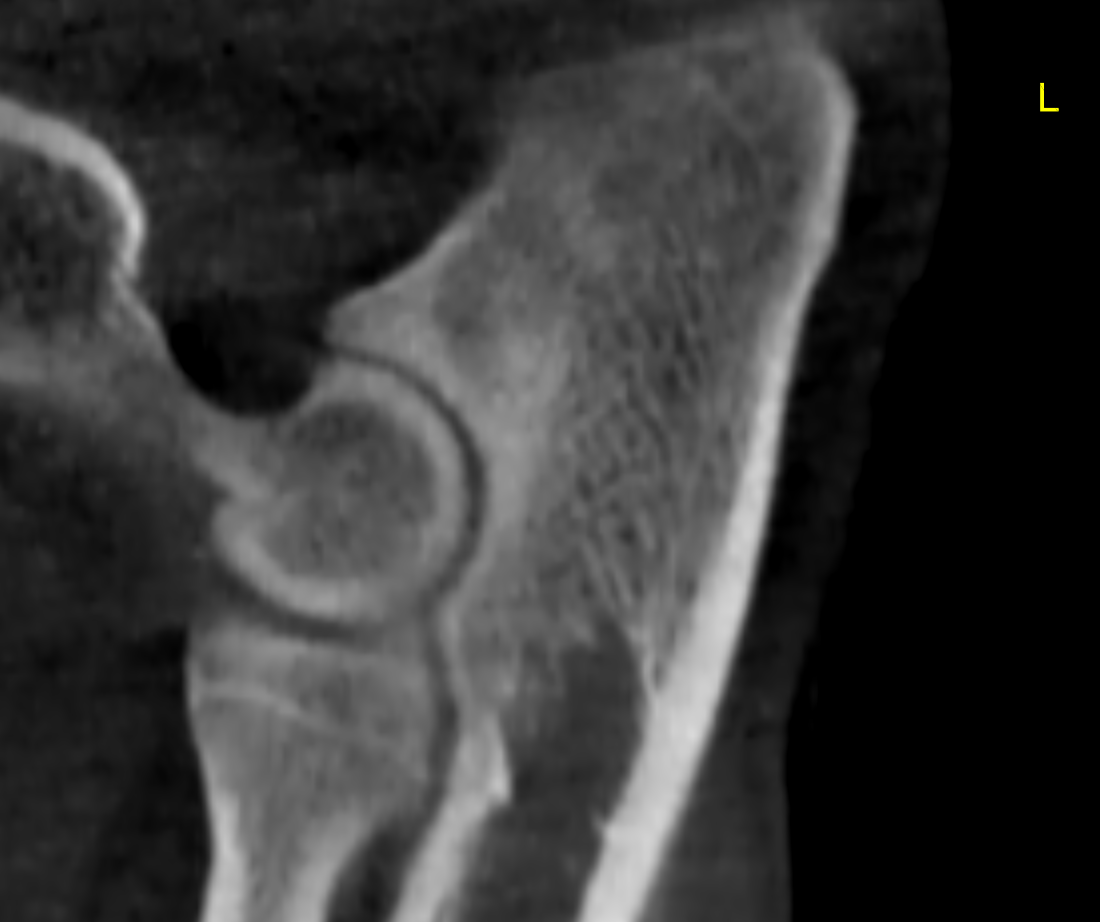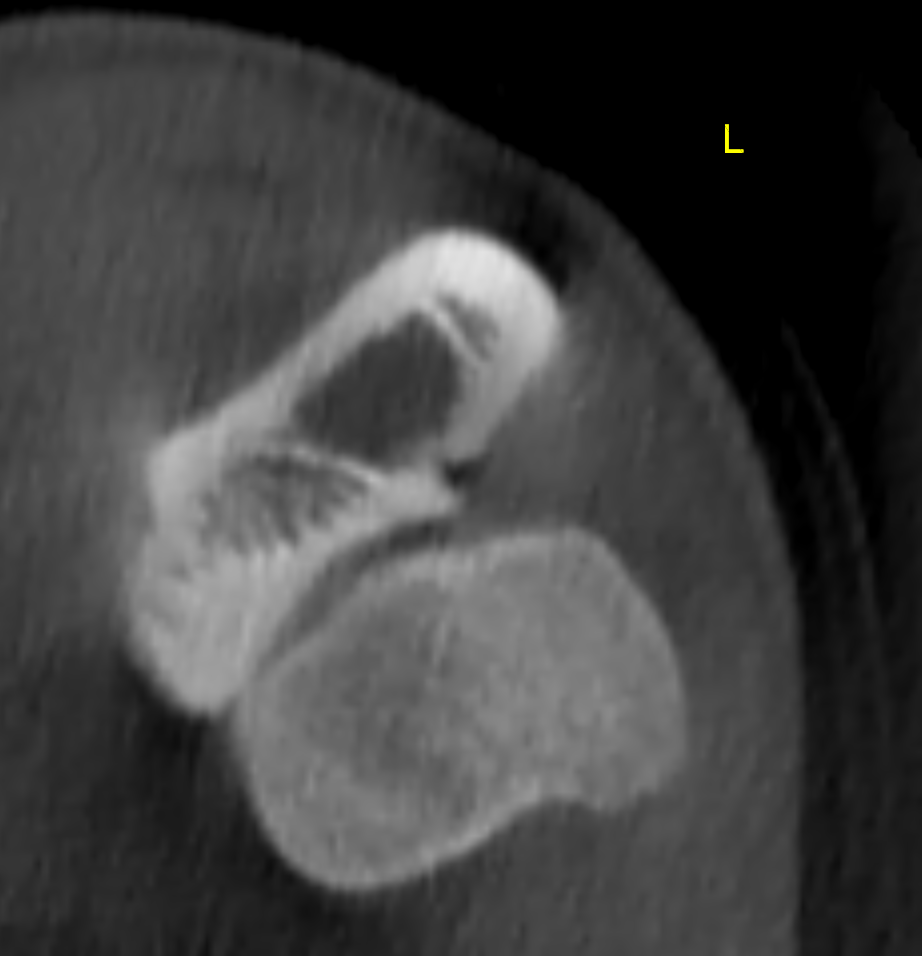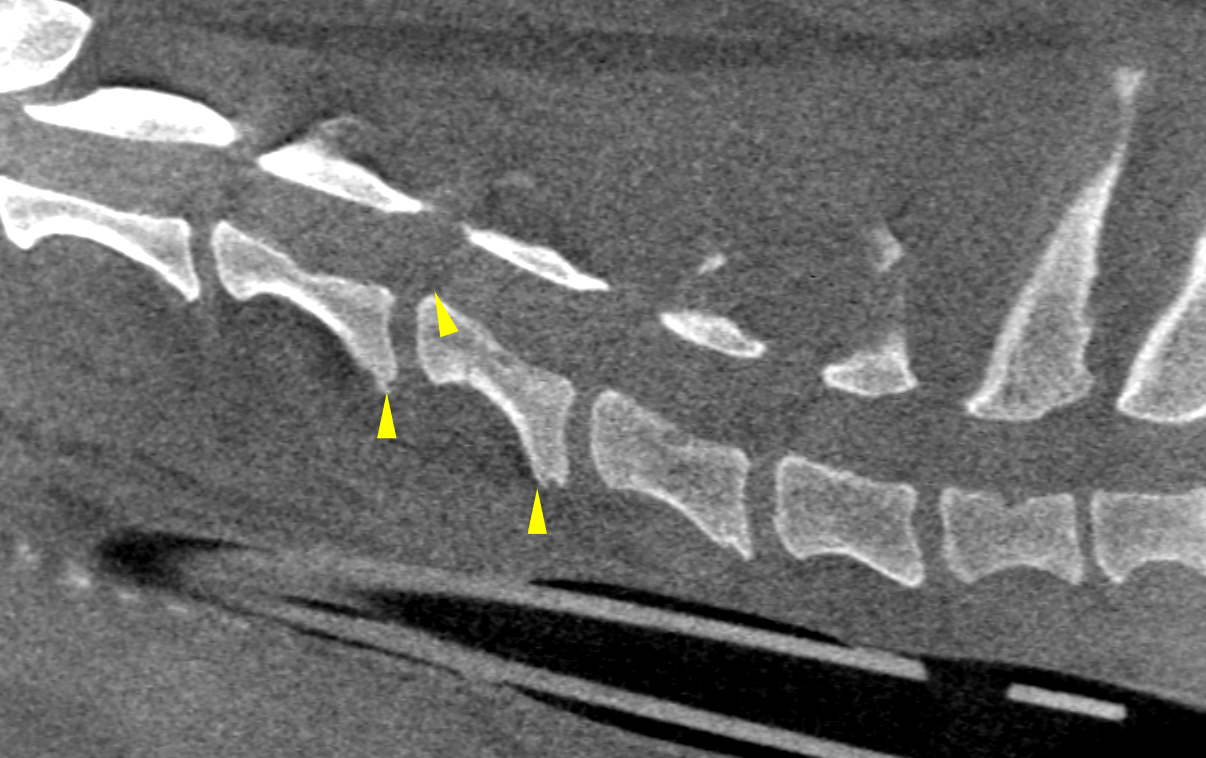CT of the cervical spine, shoulders and elbows –
Cervical spine: Mild osteophyte formations emerging from the neighboring vertebral endplates of C4/C5 and C5/C6 consistent with emerging Spondylosis deformans are noted along with mild craniodorsal tipping of the vertebral body of C5 and mild intervertebral disc protrusion.
Shoulders: The left shoulder reveals moderate degenerative joint disease with osteophytosis and subchondral bone sclerosis and joint effusion. Moreover there are indirect signs of chronic biceps tendovaginitis with marked semicircular bony exostosis and sclerosis within the intertubercular groove of the biceps tendon.
Elbows: The medial coronoid process of both elbows reveals increased sclerosis with loss of the regular trabecular bone pattern. The delineation of the medial coronoid processes is smooth respectively. There is no fragment or fissure line identified. The joint surfaces are congruent. Emerging oesteophytes are noted at the periarticular margins.
